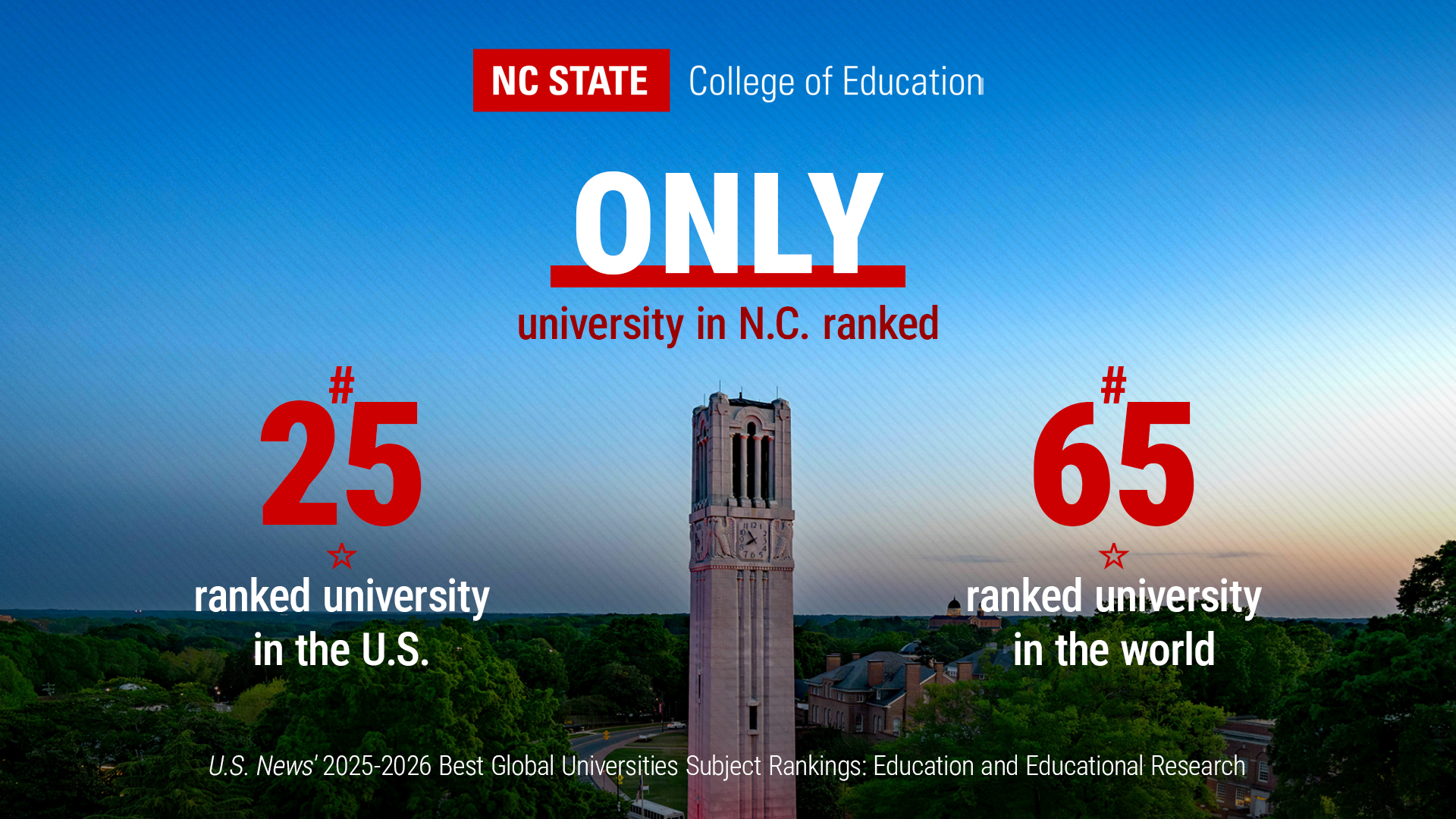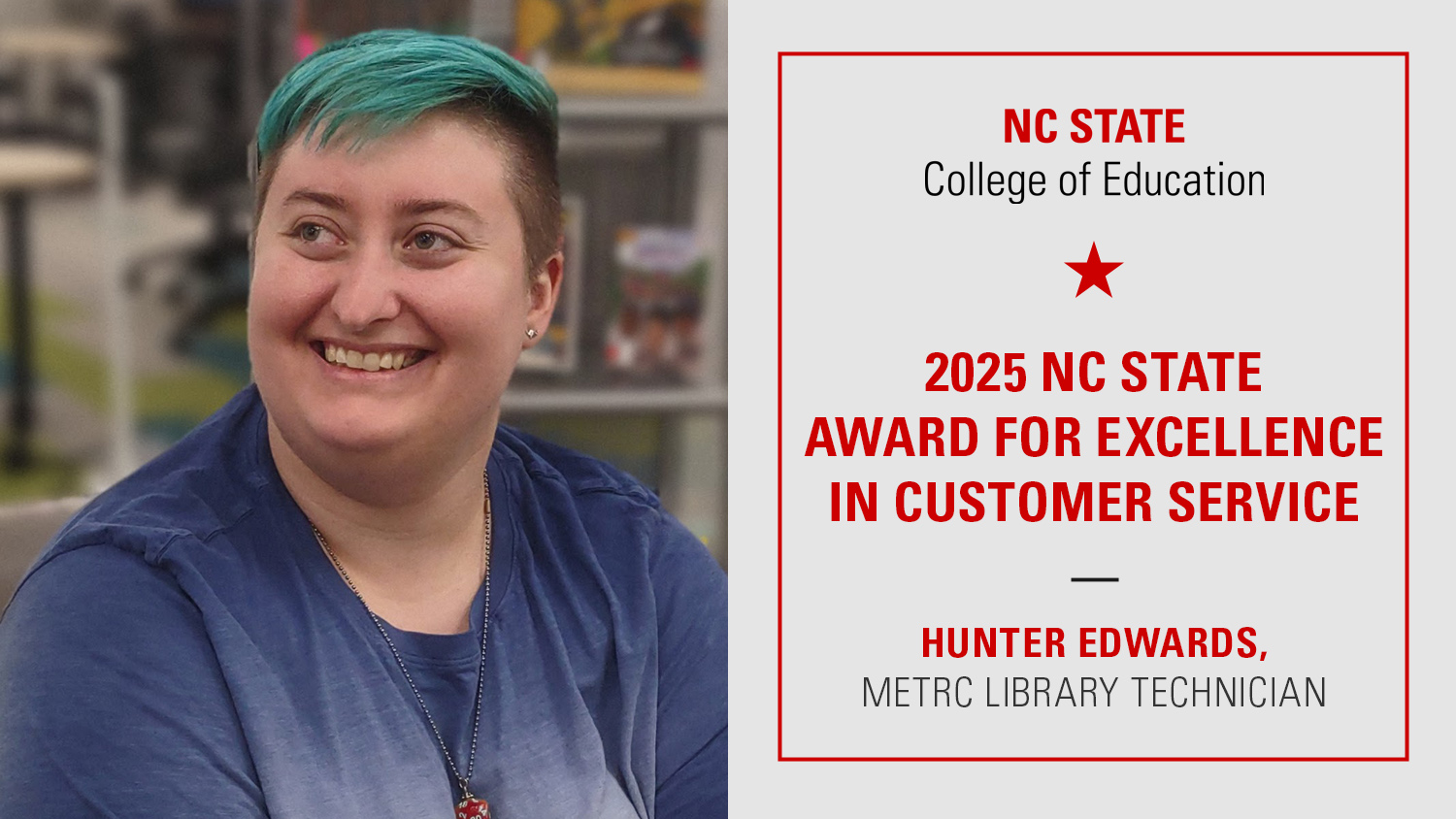Why is Inquiry-based Learning Important in Social Studies Classrooms? ‘I Very Much Believe Inquiry is a Life Skill,’ Says Associate Dean John Lee
NC State College of Education Associate Dean John Lee says that when educators engage students in the social studies classroom, they should do so with the expectation that those young people are novices, who have limited prior experience with the content.
While there are many teaching and learning practices that don’t account for this perspective, Lee said, using an inquiry-based approach can meet students where they are, honoring their current level of intellectual development while setting high expectations and encouraging them to take action.
“What I really think inquiry, in general, does is position teachers to be able to support students to go through the complex process of building up their knowledge and then doing something with it in an active manner,” Lee said. “I very much believe inquiry is a life skill. From the littlest to the most important things we have to do in our life, they’re often framed around a question you have to answer or a problem that you have to solve, and inquiry can provide practice with doing that.”
What Steps Do Students Go Through During Inquiry-based Learning?
Lee, whose research focuses on the use of inquiry in social studies classrooms, is one of the developers of the College, Career and Civic Life (C3) Framework, a guidance document for social studies teaching published in 2013 that has been used, in part or in whole, in upgrading social studies curricula in 38 states.
As part of this framework, he and his colleagues developed the Inquiry Arc, which outlines a set of skills that frame the use of inquiry in social studies.
“We use the metaphor of an arc to invoke what life is. Life goes through an arc; you’re born, you live your life and all the drama of your life, and then life comes to its natural conclusion. Inquiry works like that,” Lee said. “Inquiry begins with a question and then, as you go through the process of doing an inquiry, it can have lots of twists and turns just like life does, and it comes to a conclusion when you communicate the result of an inquiry. So, we use that arc metaphor very intentionally.”
The Inquiry Arc consists of four dimensions that are designed to help students explore topics in social studies classrooms, as well as develop and strengthen inquiry skills that will stay with them through the rest of their lives:
- Pose a question
- Investigate that question
- Develop claims with evidence
- Communicate conclusions through argument
While steps one and two of this process may seem self-explanatory, steps three and four can become a bit more tricky for students who are used to questions and classroom assignments having only one correct answer.
When students, as part of step three in the Inquiry Arc, study historical sources and make a claim based on their evidence, they are stating what they believe to be true about the past based on extrapolated evidence. However, it’s possible that a classmate could look at the same historical evidence and develop a different claim.
Ultimately, students learn to defend their claims with evidence, which, Lee said, is something that they will also need to be able to do in the real world.
“We want to build up young people’s skills to be able to make arguments that are evidence-based. Social studies is about preparation for life, and we want young people in social studies classrooms to figure out and practice with these skills, so they can transfer them to other environments, other audiences and other modalities,” he said. “Social studies is about citizenship, and we’re very dependent on the citizens in our democracy being active and doing that responsibly and in an informed manner that respects the very likely reality that somebody is going to disagree with you.”
How Can I Effectively Implement Inquiry-based Learning in the Classroom?
When teachers begin to introduce inquiry-based learning into the classroom, Lee says there are two important factors to consider before starting out: time and scaffolding.
When he works with teachers to design inquiry, Lee recommends they begin by stipulating the exact number of minutes that will be spent on the inquiry process. For example, teachers will often allot 200 minutes – four 50 minute class periods – for the process. By implementing this time constraint, it allows for teachers to plan for what they want students to do and think about whether or not the task could reasonably be accomplished in that time frame.
While it’s important to have a plan, it’s also important, Lee said, for students to have the necessary prerequisite skills to follow it, which is why scaffolding is crucial. Before students engage in inquiry-based learning, it’s important to spend some time beforehand building up scaffolds so that students have sufficient background knowledge to understand, for example, the historical background of the documents they look at during the inquiry process.
“Scaffolding is such a lovely metaphor because it’s what we do with fragile things. A building is scaffolded because the structure itself that’s surrounded by the scaffolding is fragile; it would fall down if the scaffolding wasn’t there. So, we build scaffolds around the intellectual structures that are fragile, that our novice learners are attempting to build, and that’s what the teacher does when they implement inquiry,” he said.
In building up scaffolds for students, and in developing their own inquiry-based learning techniques, Lee recommends social studies teachers collaborate with teachers from other disciplines in their school as well as fellow social studies educators.
Places like the National Council for the Social Studies, the premier professional organization for social studies educators; the C3 Teachers network, developed as part of the C3 Framework, and professional learning teams can all be excellent resources for developing ideas and refining practices, Lee said.
“Collaborate, be willing to share and be vulnerable in the process because we learn more from each other than when we don’t work together,” he said. “Be open to iterating in this process. Be open to improving your practice and accepting that it might not go the way you hoped it would go the first time. If you’re new to inquiry, it may take a few tries to get it done but go ahead and give it a try and continue and persist in the work that you’re doing to engage students in this approach to teaching and learning.”
- Categories:



